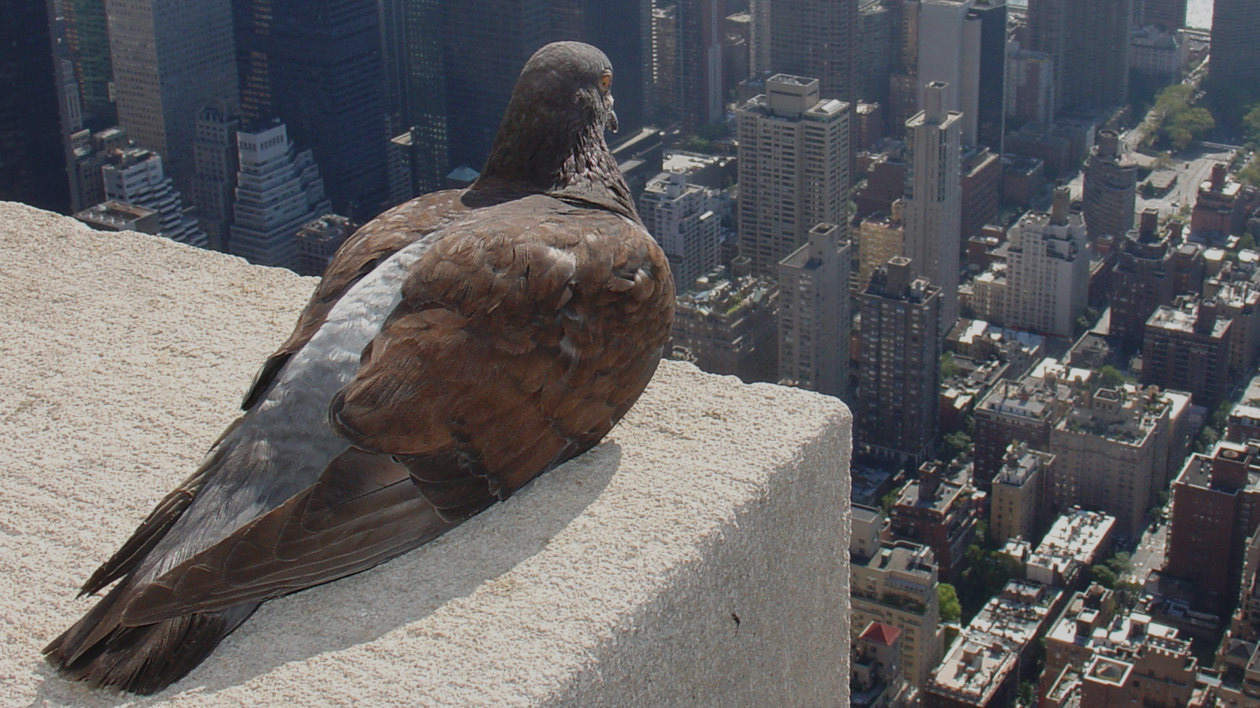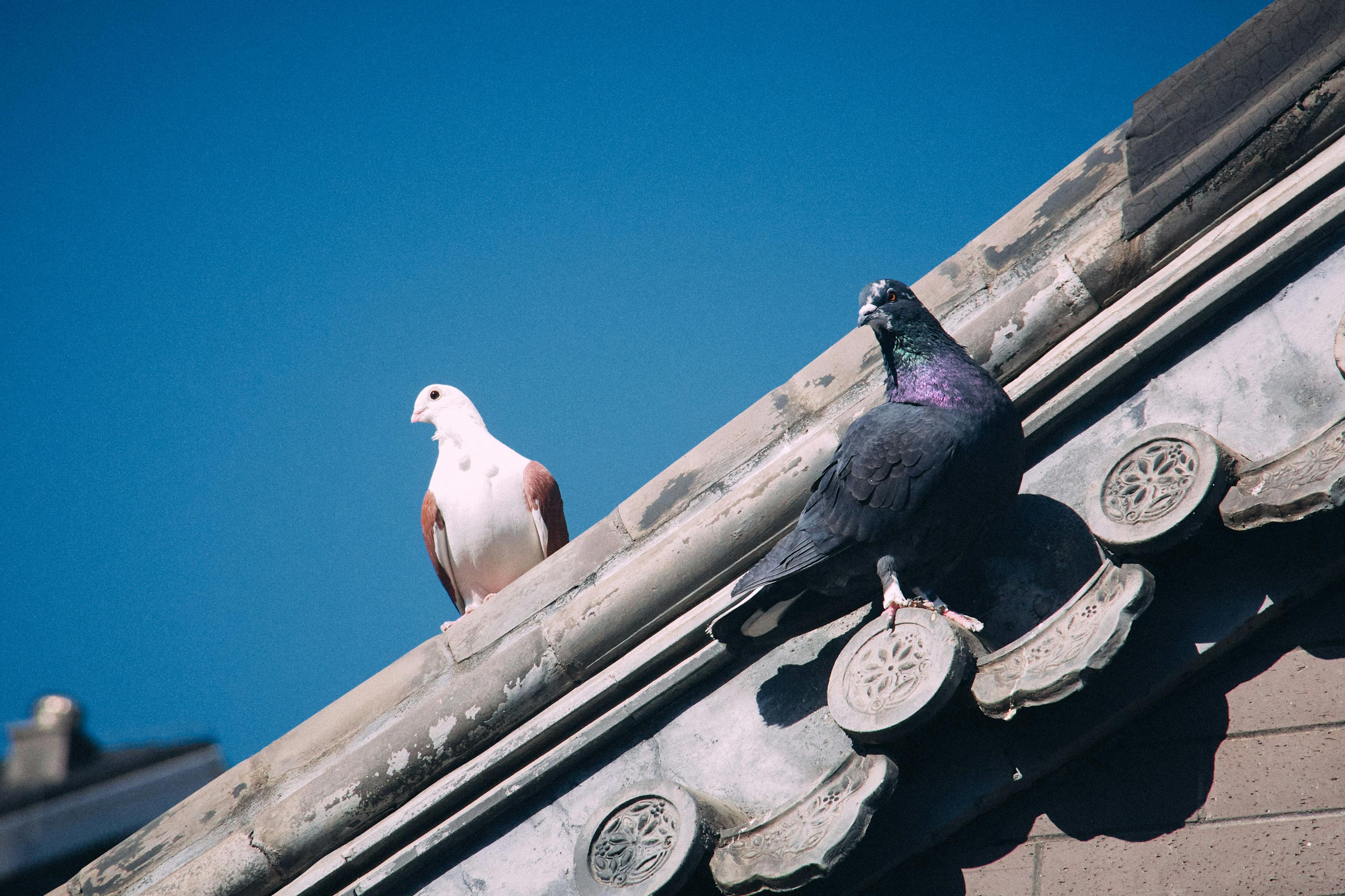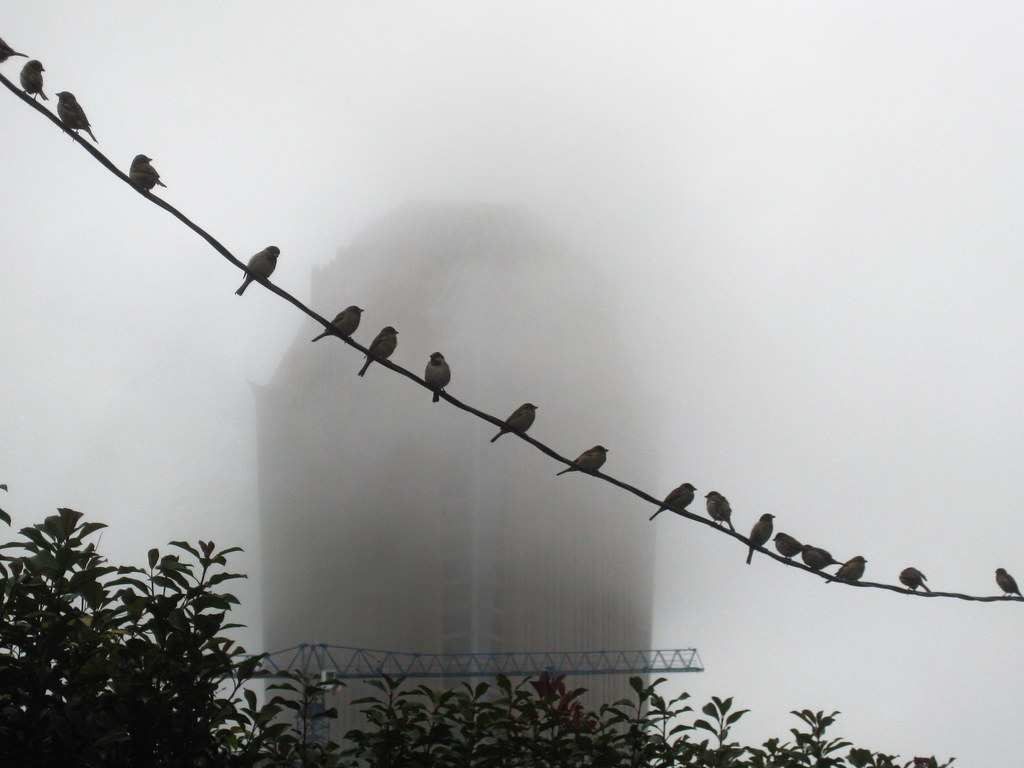Discover the world of urban birdwatching! Explore diverse species, essential tips, and prime locations. Start your city birding adventure today.
Introduction to Urban Birdwatching
Understanding Urban Birdwatching
Urban birdwatching is an enthralling venture into the diverse avian world thriving amidst urban landscapes. Unlike traditional birdwatching, which often conjures images of remote forests or serene countryside, urban birdwatching brings forth a vibrant and unexpected encounter with feathered inhabitants in bustling cityscapes. This niche pursuit involves observing, identifying, and appreciating bird species thriving in metropolitan environments.
The Urban Avian Phenomenon
The urban avian landscape is a dynamic tapestry, offering a fascinating glimpse into the adaptability and resilience of various bird species. Amidst the concrete jungles and towering structures, birds navigate an altered ecosystem, displaying unique behaviors and adaptations. From pigeons gracefully gliding through skyscrapers to sparrows chirping in city parks, urban areas serve as a habitat mosaic for a diverse avian community.
Significance and Appeal of Urban Birdwatching
The Appeal of Urban Birdwatching
Urban birdwatching appeals to enthusiasts seeking an accessible and diverse avian experience. It eliminates the need for distant excursions, inviting individuals to explore birdlife conveniently within their city surroundings. This accessibility breaks barriers, fostering interest among a broader demographic, including city dwellers, families, students, and nature enthusiasts.
The Importance of Urban Birdwatching
Beyond the thrill of spotting birds in unexpected locales, urban birdwatching holds immense ecological significance. It serves as a gateway to understanding the interaction between urbanization and avian life, shedding light on the adaptability of species to human-altered environments. Moreover, it highlights the role of cities in conserving and supporting avian biodiversity.
Benefits of Urban Birdwatching
Personal and Community Benefits
Engaging in urban birdwatching offers multifaceted benefits. It provides moments of tranquility amid the city’s hustle, promoting mental well-being and mindfulness. Furthermore, it fosters a sense of community among birdwatchers, encouraging knowledge sharing and collaborative conservation efforts.
Conservation Impact
Urban birdwatching isn’t just a recreational pursuit; it’s a conduit for citizen science and conservation advocacy. Observations made by urban birdwatchers contribute to data collection vital for monitoring bird populations and understanding their adaptation to urban environments. This involvement aids conservation efforts, advocating for the protection of urban avian habitats.
Urban birdwatching, while often overlooked, unveils a world teeming with avian diversity within city limits. Understanding its significance, appeal, and inherent benefits opens doors to appreciating the avian life thriving amidst our urban landscapes.

Getting Started with Urban Birdwatching
Urban environments present unique opportunities for birdwatching enthusiasts, offering a dynamic and accessible landscape to explore avian life. To embark on this urban adventure, getting started requires a blend of preparedness, knowledge, and a keen eye for detail.
Essential Gear and Equipment
Birdwatching Essentials:
- Binoculars: Invest in quality binoculars with adequate magnification and a wide field of view to observe birds from various distances.
- Field Guide: Acquire a field guidebook or use birding apps to aid in species identification, behavior, and habitat details.
- Notebook and Pen: Keep a journal to record observations, bird species sighted, behaviors, and locations.
Additional Tips:
- Clothing: Wear comfortable attire suitable for weather conditions and outdoor exploration.
- Optics Maintenance: Maintain clean lenses for optimal bird observation.
Identifying Common Urban Birds
Urban Avian Diversity:
- Species Familiarization: Learn to recognize common urban birds like pigeons, sparrows, crows, and starlings.
- Distinctive Features: Focus on identifying unique markings, colors, and characteristic behaviors of these urban avian inhabitants.
Identification Resources:
- Local Bird Guides: Utilize regional bird guides or online resources highlighting city-specific bird species.
- Observation Practice: Regularly observe and note bird features, behaviors, and habitats to enhance recognition skills.
Choosing Ideal Birdwatching Locations in Cities
Urban Birding Hotspots:
- City Parks: Explore local parks, green spaces, and botanical gardens known for diverse bird populations.
- Riverfronts and Lakes: Visit waterfronts, lakesides, or wetlands in urban areas, attracting various bird species.
- Urban Trails: Follow designated birding trails or walking paths that traverse bird-rich zones within cities.
Locational Considerations:
- Seasonal Variations: Understand bird migration patterns to anticipate optimal times for birdwatching.
- Habitat Diversity: Focus on locations offering diverse habitats such as wooded areas, grasslands, or water bodies for varied avian encounters.
Getting started in urban birdwatching involves equipping oneself with essential gear, mastering identification techniques, and scouting suitable locations within the cityscape. Embrace this engaging activity to delve into the bustling avian world thriving amidst urban settings.
Tips for Successful Urban Birdwatching
Urban birdwatching is a dynamic activity that demands a blend of skill, patience, and awareness. Enhance your birdwatching experience in the city with these effective tips and techniques.
Observational Techniques and Best Practices
Patience and Persistence:
- Quiet Observation: Practice observing birds silently without sudden movements to avoid startling them.
- Patience in Stillness: Allow birds to acclimate to your presence by staying still for extended periods to witness their natural behaviors.
Use of Binoculars and Optics:
- Proper Focus: Adjust your binoculars or scope to ensure a clear and focused view of birds at different distances.
- Steady Viewing: Employ steady hand techniques or use tripods for stabilized viewing, especially for prolonged observations.
Enhancing Birdwatching Experience in Urban Settings
Time and Season Considerations:
- Early Mornings and Late Afternoons: Optimal times for birdwatching as birds tend to be more active during these periods.
- Seasonal Changes: Recognize seasonal variations in bird behaviors, migrations, and species availability.
Environmental Awareness:
- Noise Reduction: Choose locations away from heavy traffic or other disruptive urban noises for better birding experiences.
- Observe Vegetation: Study bird behavior in relation to urban greenery, as many species tend to dwell in specific plant types.
Engaging with Local Birdwatching Communities
Joining Birding Groups or Clubs:
- Community Engagement: Participate in local birdwatching clubs, forums, or online communities to share knowledge and sightings.
- Group Excursions: Join organized birdwatching outings or walks to explore diverse birding spots in the city.
Citizen Science Initiatives:
- Contributing Data: Engage in citizen science projects, contributing observations to databases for conservation research.
- Educational Opportunities: Contribute to educational programs or volunteer for initiatives promoting bird conservation awareness.
By implementing these tips, you can elevate your urban birdwatching experience, hone observation skills, maximize encounters with city-dwelling birds, and contribute to community-based birdwatching initiatives.
Urban Bird Species to Explore
Exploring the diverse avian life within urban landscapes presents a captivating journey filled with unique encounters and distinct species profiles.
Profile of Common Urban Bird Species
Pigeons (Columba livia)
- Description: Often seen in cities worldwide, they come in various colors and have adapted well to urban environments.
- Habitat: Frequently found roosting on buildings, bridges, and parks, displaying distinct cooing sounds.
Sparrows (Passeridae Family)
- Description: Small, brownish birds with distinctive head markings, thriving in city green spaces.
- Behavior: Known for their social nature, often seen in flocks foraging for seeds and insects.
Starlings (Sturnus vulgaris)
- Description: Iridescent black birds with speckled plumage, recognized for their melodious calls.
- Habitat: Nests in cavities, often in buildings, and forms large, synchronized flocks in flight.
Seasonal Variations and Migration Patterns
Winter Visitors
- Robins: Frequently observed during winter months, seeking food in gardens and parks.
- Waxwings: Visiting in winter, these birds forage on berries and fruit trees.
Migratory Birds
- Swallows and Swifts: Often seen in spring and summer months, performing aerial acrobatics in pursuit of insects.
- Warblers: Vibrantly colored songbirds arriving in spring for breeding, displaying diverse plumage.
Unique Characteristics of Urban Avian Life
Adaptation to Urbanization
- Nesting Behaviors: Birds like gulls and falcons have adapted to urban structures for nesting.
- Altered Behaviors: City birds often display altered song patterns and feeding habits due to urban environments.
Biodiversity in Urban Spaces
- Ecological Niches: Varied bird species occupy niches within cities, contributing to urban biodiversity.
- Species Interaction: Observing diverse species interactions adds depth to urban birdwatching experiences.
Exploring urban bird species offers insight into their adaptations, behaviors, and roles within city ecosystems, enriching the urban birdwatching experience with each unique encounter.

Conservation and Urban Birdwatching
Conservation efforts intertwine profoundly with the practice of urban birdwatching, creating a symbiotic relationship that fosters awareness, education, and positive environmental impact.
Role of Urban Birdwatching in Conservation Efforts
Citizen Science Contributions
- Data Collection: Urban birdwatchers contribute essential data aiding scientific studies on avian populations.
- Monitoring Species: Regular observations provide insights into urban bird behavior, aiding conservationists in understanding changes.
Awareness and Advocacy
- Public Engagement: Urban birdwatching cultivates interest in local wildlife, fostering advocacy for urban green spaces.
- Educational Platforms: Events and workshops on urban birdwatching raise awareness about biodiversity and conservation.
Urban Habitats and Their Impact on BirdSpecies
Urbanization’s Effects
- Habitat Fragmentation: Expansion affects nesting and foraging areas, impacting bird populations.
- Pollution Challenges: Urban pollutants can adversely affect bird health and survival rates.
Green Spaces and Biodiversity
- Green Urban Initiatives: Parks and green areas provide crucial habitats and corridors for urban birds.
- Preserving Urban Ecosystems: Conservation measures protect diverse species cohabiting in urban environments.
Engaging in Citizen Science for Urban Bird Conservation
Community-Driven Initiatives
- Bird Counts and Surveys: Participating in local bird counts aids in understanding species distribution.
- Collaborative Projects: Community-led conservation projects enhance bird habitats and support species diversity.
Digital Platforms and Apps
- E-Bird and Similar Tools: Utilizing digital tools assists in documenting and sharing bird sightings for research.
- Data Accessibility: Technology facilitates data sharing, fostering a global network of birdwatchers aiding conservation.
Urban birdwatching acts as a conduit for promoting conservation, empowering individuals and communities to contribute meaningfully to preserving urban biodiversity and supporting avian species’ well-being within city landscapes.
Challenges and Solutions in Urban Birdwatching
Urbanization and Its Effects on Bird Habitats
Urbanization presents a myriad of challenges to avian species, reshaping their habitats and posing significant threats to their existence.
Habitat Fragmentation
- Loss of Green Spaces: Rapid urban expansion diminishes natural habitats, fragmenting bird populations.
- Barriers to Movement: Urban structures disrupt migration routes and breeding patterns, impacting bird diversity.
Altered Ecosystems
- Changes in Food Sources: Urban areas introduce new food sources, altering bird diets and behavior.
- Predation Risks: Increased presence of certain predators in urban settings can jeopardize bird populations.
Overcoming Obstacles in Urban Birdwatching
Promoting Green Initiatives
- Urban Planning: Advocating for green spaces within cities supports bird habitats and promotes biodiversity.
- Community Action: Collaborating with local authorities fosters bird-friendly policies and conservation efforts.
Mitigating Human Impact
- Reducing Pollution: Minimizing urban pollutants supports avian health and ecosystem balance.
- Sustainable Practices: Encouraging eco-friendly practices in urban areas aids in preserving bird habitats.
Initiatives and Solutions for Urban Bird Conservation
Bird-Friendly Architecture
- Building Designs: Implementing bird-friendly building practices reduces collision risks for birds.
- Artificial Nesting Sites: Installing nest boxes and platforms compensates for habitat loss.
Education and Advocacy
- Community Engagement: Educating the public on bird conservation fosters support and action.
- Policy Advocacy: Lobbying for policies supporting urban bird conservation strengthens conservation efforts.
Overcoming the challenges posed by urbanization requires concerted efforts, from fostering sustainable urban planning to advocating for policies that safeguard avian habitats within cities. Engaging communities and promoting education play pivotal roles in ensuring the survival and well-being of urban bird species.
Urban Birdwatching for All Ages
Encouraging Children to Explore Birdwatching
Engaging children in urban birdwatching not only fosters a connection with nature but also cultivates a sense of curiosity and conservation awareness from an early age.
Nature-Based Education
- Interactive Activities: Birdwatching games and scavenger hunts make the learning process enjoyable for children.
- Storytelling and Art: Narratives and artistic expression spark interest and creativity in understanding bird species.
Accessible Learning Tools
- Binoculars for Kids: Providing child-friendly binoculars facilitates their involvement in observing birds.
- Educational Resources: Books, apps, and online platforms tailored for young birdwatchers enhance their learning experience.
Engaging Seniors and Urban Birdwatching
Encouraging seniors to participate in urban birdwatching offers a serene and intellectually stimulating activity while contributing to their well-being.
Nature Therapy
- Mental Well-being: Birdwatching promotes relaxation and mindfulness, reducing stress and anxiety in seniors.
- Social Interaction: Group birdwatching activities foster community engagement and social connections among seniors.
Tailored Activities
- Accessible Locations: Choosing birdwatching spots with easy accessibility ensures participation for seniors with mobility concerns.
- Guided Tours: Organizing guided birdwatching sessions provides structured experiences for seniors.
Inclusivity and Accessibility in Urban Birdwatching Programs
Ensuring inclusivity in urban birdwatching programs amplifies community engagement and broadens participation across diverse demographics.
Accessibility Considerations
- Wheelchair Accessibility: Selecting locations with wheelchair-friendly paths ensures inclusivity.
- Language and Cultural Diversity: Providing multilingual resources and fostering cultural sensitivity widens participation.
Community Engagement
- Collaborative Initiatives: Partnering with local communities and organizations encourages diverse participation.
- Outreach Programs: Engaging in outreach programs brings birdwatching opportunities to underserved communities.
Engaging all age groups, from children to seniors, and prioritizing inclusivity within urban birdwatching initiatives significantly contributes to fostering a sense of environmental stewardship and community engagement.

FAQs about Urban Birdwatching
What are the benefits of urban birdwatching?
Urban birdwatching offers an array of benefits, beyond mere observation, contributing to personal, environmental, and community well-being.
Personal Enrichment
- Mental Health: Birdwatching in cities promotes relaxation, reducing stress and anxiety.
- Educational Value: It fosters curiosity and learning about biodiversity, ecology, and behavior.
- Physical Activity: Engaging in birdwatching often involves walking or hiking, promoting physical fitness.
Environmental Awareness
- Biodiversity Awareness: Observing various bird species in cities raises awareness about urban ecosystems.
- Conservation Advocacy: Understanding the impact of urbanization on bird habitats can drive conservation efforts.
Community Engagement
- Social Interaction: Birdwatching often involves group activities, fostering social connections and a sense of community.
- Education and Outreach: Urban birdwatching programs promote shared learning experiences within communities.
How can one start urban birdwatching without much experience?
Starting urban birdwatching requires minimal equipment and a curious mind. Key steps to begin include:
Essential Equipment
- Binoculars: A basic pair is sufficient for observing birds in urban settings.
- Field Guide or App: Use guides or apps to aid in bird identification.
Getting Started
- Selecting Locations: Choose local parks, green spaces, or even your backyard as starting points.
- Observation: Start by observing common species and gradually expand your knowledge.
What are some ideal locations for urban birdwatching?
Urban areas offer surprising havens for birdwatching. Ideal locations include:
Parks and Green Spaces
- Urban Parks: Central parks often harbor diverse bird species.
- Riversides and Lakes: Water bodies attract various bird species.
Urban Habitats
- Community Gardens: Rich in bird diversity due to vegetation and food sources.
- Rooftop Gardens: Offering a unique perspective and attracting city-dwelling birds.
How does urbanization affect bird species in cities?
Urbanization poses both challenges and opportunities for bird species:
Habitat Alterations
- Habitat Loss: Construction and development reduce natural bird habitats.
- Adaptation: Some species adapt well to urban environments, altering behaviors and nesting habits.
Human Interference
- Pollution: Air and noise pollution can affect bird health and behaviors.
- Predation and Urban Hazards: Increased risks from predators and collisions with buildings.
What role can individuals play in urban bird conservation?
Individuals contribute significantly to urban bird conservation efforts:
Habitat Preservation
- Backyard Habitats: Creating bird-friendly spaces in personal environments.
- Community Initiatives: Supporting local conservation projects and volunteering in habitat restoration.
Advocacy and Awareness
- Education and Outreach: Spreading awareness about urban bird conservation.
- Policy Engagement: Participating in advocacy for urban green spaces and wildlife protection.
Conclusion
Recapitulation of Urban Birdwatching’s Importance
Urban birdwatching stands as more than a leisurely pursuit; it’s a gateway to discovery, connection, and conservation. The subtle flutters in city skies offer glimpses into a dynamic world often overlooked amidst urban bustle. By engaging in this pastime, enthusiasts tap into a realm of surprises, reaping personal and communal benefits while contributing to a larger ecological narrative.
A Multifaceted Pursuit
- Personal Connection: Urban birdwatching fosters a deep connection with nature amid urban landscapes.
- Intellectual Stimulation: It promotes learning about species, behaviors, and ecological intricacies.
Environmental Significance
- Conservation Advocacy: Each observation contributes to a larger movement advocating for urban biodiversity.
- Habitat Preservation: It underscores the importance of preserving green spaces for avian species.
Encouraging Ongoing Participation and Conservation Efforts
Sustaining urban birdwatching initiatives requires continuous involvement and dedication from both seasoned enthusiasts and newcomers alike. Cultivating a culture of engagement and activism within communities ensures the longevity of urban avian ecosystems.
Community Engagement
- Education Programs: Initiatives that introduce urban birdwatching to schools and community groups foster interest in nature from an early age.
- Volunteer Efforts: Encouraging participation in citizen science projects enhances awareness and data collection for urban bird conservation.
Conservation Advocacy
- Policy Influence: Collaborating with local authorities to create bird-friendly urban policies safeguards habitats and raises awareness.
- Green Space Protection: Advocating for the preservation and expansion of green areas within cities supports avian diversity.
Looking Ahead: Future Prospects of Urban Birdwatching
The future of urban birdwatching presents exciting prospects intertwined with technological advancements, community engagement, and global conservation endeavors.
Technological Integration
- Innovative Tools: Advancements in mobile apps and bird identification technology streamline urban birdwatching experiences.
- Data Utilization: Leveraging big data for ecological studies offers insights into urban bird populations and behaviors.
Global Collaboration
- Cross-Border Initiatives: International collaborations strengthen conservation efforts, fostering global awareness about urban bird habitats.
- Information Sharing: Building a network to share best practices in urban bird conservation accelerates progress.
As urban landscapes continue to evolve, urban birdwatching will persist as a vital bridge between humanity and nature, showcasing the harmony possible between urbanization and biodiversity. The evolving narratives of avian life in cities reflect our dedication to coexist harmoniously with the natural world, promising a future where urban habitats flourish alongside diverse bird species.
